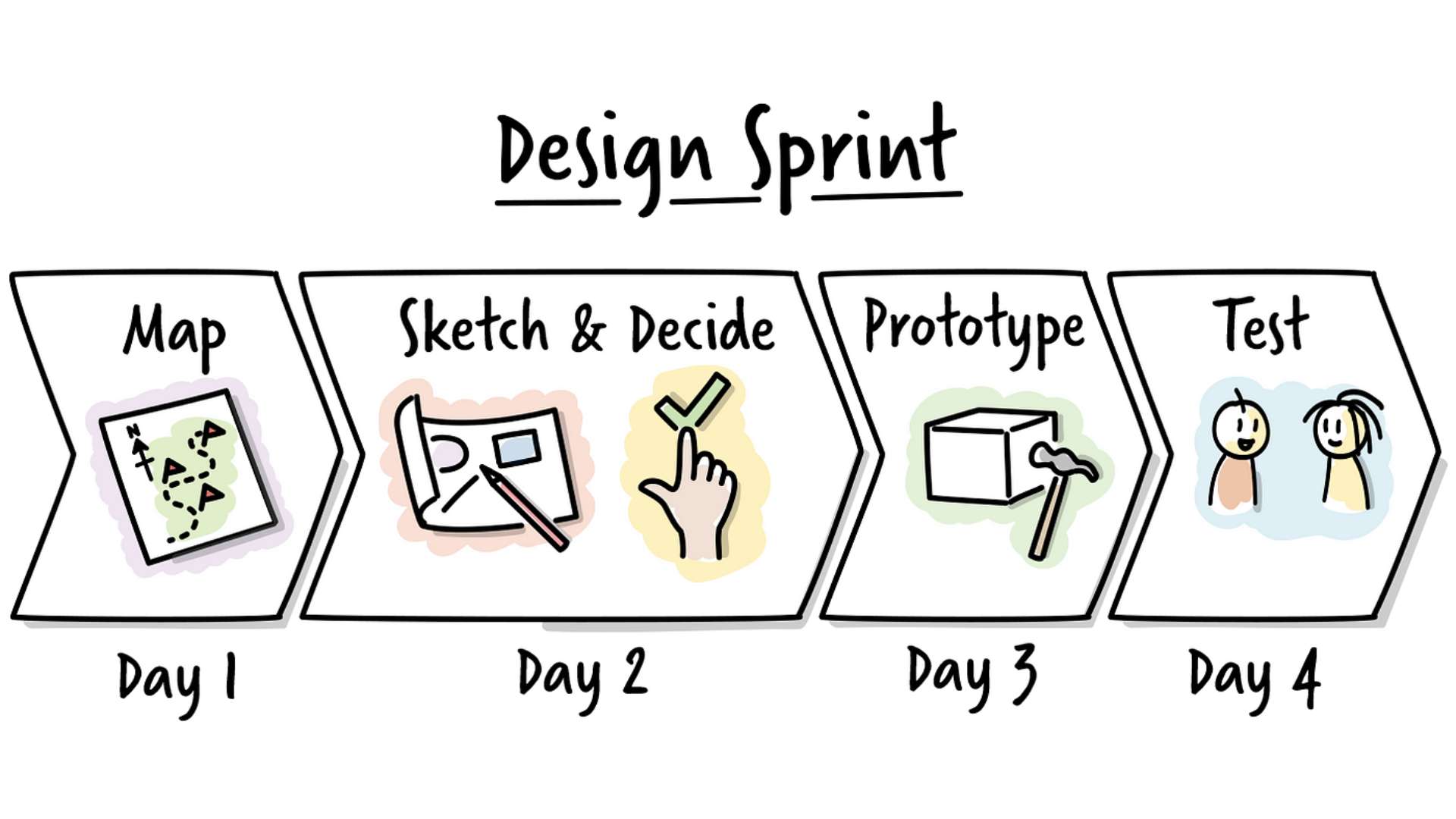Design Sprint
A human-centered approach to innovation and problem-solving
Introduction to Design Sprint
The Design Sprint is a structured, time-constrained process that helps teams solve complex problems and test new ideas quickly and effectively. Developed by Jake Knapp at Google Ventures, the methodology typically spans five phases over five days: Understand, Ideate, Decide, Prototype, and Test. The goal of a Design Sprint is to bypass lengthy development cycles and provide actionable insights in just a week. By bringing together diverse team members, focusing on user-centric design, and fostering rapid iteration, Design Sprints encourage innovation and reduce risk. They are widely used for developing products, services, or processes in both startups and large organizations. This fast-paced approach empowers teams to align on priorities, validate ideas with real users, and move forward with confidence.

This methodology is iterative, flexible, and focused on collaboration, making it particularly effective in addressing complex, multifaceted problems where the solution is not immediately apparent. DTS brings together what is desirable from a human point of view with what is technologically feasible and economically viable.

Phases of Design Sprint:
Understand & Define
Identify the challenge, align on the sprint goal, and map the problem space.
Select a key area to focus on for the sprint.
Sketch
Brainstorm and sketch potential solutions individually.
Use exercises like "Crazy 8s" to generate diverse ideas.
Decide & Storyboard
Review all ideas, vote on the best ones, and decide on the concept to prototype.
Develop a detailed storyboard for the chosen solution.
Prototype & Test
Build a realistic, low-fidelity prototype.
Conduct user testing with real users to gather feedback and validate assumptions.